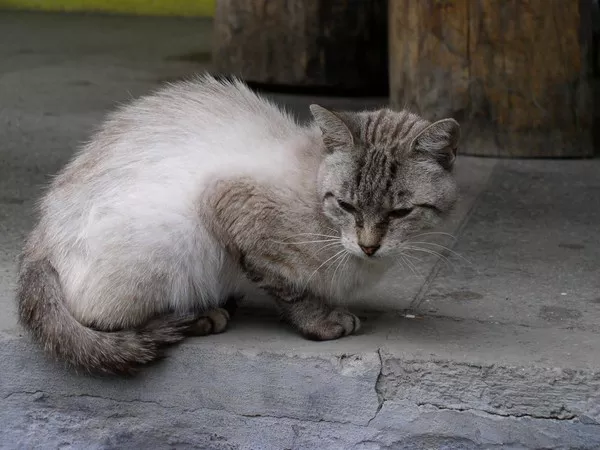Catnip, scientifically known as Nepeta cataria, is a member of the mint family and has been a source of fascination for cat owners and researchers alike. Its effects on cats can be both amusing and perplexing, leading to questions about dosage, safety, and the overall impact on feline health. This essay will explore the nature of catnip, its effects on cats, how much is safe for them to consume, and the best practices for introducing it into a cat’s life.
The Nature of Catnip
Catnip is a perennial herb native to Europe and Asia, but it has also found a home in North America. The plant contains a compound called nepetalactone, which is responsible for its psychoactive effects on cats. When cats encounter catnip, they may exhibit behaviors such as rolling, rubbing, purring, and playful antics. These reactions are typically short-lived, lasting about 10 to 15 minutes, after which cats may lose interest for a period of time.
Chemical Composition
Nepetalactone is the active ingredient that triggers the euphoric response in cats. It binds to receptors in the cat’s nasal tissue, which then stimulates sensory neurons that lead to the brain. Interestingly, not all cats are affected by catnip; sensitivity to the herb is hereditary, with approximately 50-75% of cats showing a reaction. Kittens and elderly cats are less likely to respond, as the sensitivity usually develops around six months of age.
Forms of Catnip
Catnip is available in various forms, including dried leaves, sprays, and catnip-infused toys. The dried form is the most common and can be sprinkled on scratching posts or toys, while sprays can be used to rejuvenate old toys or encourage play. Understanding the different forms can help cat owners choose the best option for their pets.
Effects of Catnip on Cats
The effects of catnip can be broadly categorized into behavioral and physiological responses.
Behavioral Responses
When exposed to catnip, many cats display a range of behaviors that can include:
Rolling and Rubbing: Cats may roll on the ground and rub their bodies against the source of catnip, which is thought to be a way of marking territory.
Purring and Vocalization: Increased vocalization and purring can occur, indicating excitement or pleasure.
Playfulness: Cats often become more playful, engaging in activities like chasing or pouncing on imaginary prey.
Sedation: After the initial excitement, some cats may become calm and relaxed, almost as if they are in a trance-like state.
These behaviors are temporary, and after a short period, cats typically lose interest in catnip. This cycle can repeat several times a day, but it is important to note that too much exposure can lead to desensitization.
Physiological Responses
While the behavioral effects are the most notable, there are also physiological responses to catnip. These can include:
Increased Heart Rate: The excitement can lead to a temporary increase in heart rate.
Altered Sensory Perception: Cats may experience heightened senses, making them more aware of their surroundings.
Relaxation: After the initial stimulation, many cats will exhibit signs of relaxation, which can be beneficial for reducing stress.
How Much Catnip Can a Cat Eat
Determining a safe amount of catnip for cats requires an understanding of their individual responses and tolerances. While catnip is generally considered safe, moderation is key.
Recommended Amounts
Dried Catnip: A small pinch (about a teaspoon) of dried catnip can be sprinkled on a scratching post or mixed into toys. This amount is typically sufficient to elicit a response without overwhelming the cat.
Catnip Toys: For toys infused with catnip, it is advisable to limit play sessions to a few times a week. This helps prevent desensitization and maintains the cat’s interest.
Catnip Sprays: When using catnip spray, a light misting on toys or bedding is usually adequate. Over-saturating can lead to a strong odor that may be off-putting to both cats and humans.
Signs of Overindulgence
While catnip is not toxic, excessive consumption can lead to mild gastrointestinal upset, including vomiting or diarrhea. Signs that a cat may have had too much catnip include:
Lethargy: After an initial burst of energy, a cat may become overly tired or disinterested in play.
Vomiting or Diarrhea: These symptoms can occur if a cat consumes too much catnip.
Desensitization: If a cat is exposed to catnip too frequently, it may become less responsive over time.
Individual Variability
Each cat is unique, and their reactions to catnip can vary widely. Factors such as age, health, and individual temperament can influence how much catnip is appropriate. For example, older cats may not respond as vigorously as younger cats, and some breeds may be more sensitive to catnip than others.
Best Practices for Introducing Catnip
Introducing catnip to a cat’s environment should be done thoughtfully to maximize enjoyment and minimize potential negative effects.
Gradual Introduction
When introducing catnip for the first time, it is best to start with a small amount. Observe the cat’s reaction and adjust accordingly. If the cat seems to enjoy it, you can gradually increase the frequency of exposure.
Monitoring Reactions
After introducing catnip, monitor your cat’s behavior closely. Look for signs of enjoyment, such as playfulness and purring, but also watch for any signs of distress or discomfort. If a cat shows any negative reactions, it may be best to reduce the amount or frequency of exposure.
Providing Variety
To keep the experience fresh, consider rotating different forms of catnip. For example, you might use dried catnip one week and catnip-infused toys the next. This variety can help maintain your cat’s interest and excitement.
Safety Considerations
While catnip is generally safe for cats, there are some important safety considerations to keep in mind.
Toxicity Concerns
Catnip is not toxic to cats, but it is crucial to ensure that any catnip products are free from harmful additives or chemicals. Always purchase catnip from reputable sources to avoid contamination.
Allergies and Sensitivities
Some cats may have allergies or sensitivities to catnip. Signs of an allergic reaction can include excessive scratching, sneezing, or gastrointestinal upset. If you suspect an allergy, discontinue use and consult a veterinarian.
Health Conditions
Cats with certain health conditions, such as gastrointestinal disorders or sensitivities, may be more prone to adverse reactions from catnip. If a cat has a pre-existing condition, consult a veterinarian before introducing catnip.
Conclusion
Catnip can be a delightful addition to a cat’s life, providing stimulation, enrichment, and joy. Understanding how much catnip is safe for cats involves recognizing their individual responses and maintaining moderation. By introducing catnip thoughtfully and observing reactions, cat owners can ensure their feline friends enjoy the benefits of this fascinating herb without any negative consequences. Ultimately, catnip can enhance the bond between cats and their owners, creating moments of joy and playfulness that enrich their lives.
Related topic:



























